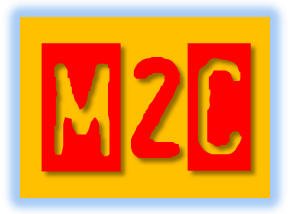 M2C–the Mesoamerican/two-Cumorahs theory–is the favorite theory of some LDS intellectuals today, but it was not always popular.
M2C–the Mesoamerican/two-Cumorahs theory–is the favorite theory of some LDS intellectuals today, but it was not always popular.
In the 1960s, the Church formally disavowed it, as I’ll show below.
Today, you see it everywhere, from the North Visitors Center on Temple square to the splash page of BYU Studies (at the bottom of the page, under “Popular Pages,” click on “Charting the Book of Mormon,” then scroll down to “Plausible Locations of the Final Battles.”
It looks like this:
| BYU Studies teaches M2C |
Notice, the New York Cumorah is nowhere to be seen.
The narrative reads, “The hill Ramah/Cumorah, upon which both the Jaredites and Nephites fought their last battles (see Ether 15:11; Mormon 6:4–6), is shown here on the northwestern edge of the Tuxtla Mountains in Mexico, about ninety miles from a narrow pass (see Mormon 3:5). Other Jaredite locations, including Omer’s flight to Ramah (see Ether 9:3), are also shown here. Again, these locations are plausible, but not definite.”
By implication (and by explicit declaration if you read the works of the intellectuals), New York is not even a plausible location for the Hill Cumorah.
And, of course, BYU and CES students are taught the same thing with the fantasy map at BYU, which you can see here: http://bom.byu.edu/
In my view, New York is not only a plausible location, it’s the only location for the Hill Cumorah. One reason, of course, is because of Letter VII and the unanimous statements of every prophet and apostle who has spoken publicly about the issue. But other reasons are the geology, geography, history, anthropology, and archaeology relevant to that location.
_____
In the 1960s, the Presiding Bishopric sent out a monthly newsletter titled The Messenger about Church policy, activities, and statistics. (They even published the average fast offering donation for each stake in the Church, setting up some friendly competition).
Here is the article from newsletter for July 1960. Notice the last line: “This concept of two Cumorahs should not be taught as official Church doctrine.”
This is particularly interesting because it addresses the mere “inference” that there are two “Hills Cumorah.”
Now, BYU Studies isn’t satisfied with an “inference.” It outright teaches the M2C theory.
And, as we’ve seen, the North Visitors Center right on Temple Square teaches M2C.
https://bookofmormonwars.blogspot.com/2016/12/yes-they-do-teach-two-cumorahs-theory.html
_____
Quibblers might respond by saying “The concept of one Cumorah in New York should not be taught as official Church doctrine.”
Except if that’s the case, someone forgot to tell Joseph Smith, William Smith, Don Carlos Smith, Oliver Cowdery, David Whitmer, Brigham Young, Wilford Woodruff, Heber C. Kimball, Orson Pratt, Parley P. Pratt, James E. Talmage, LeGrand Richards, Anthony W. Ivins, Joseph Fielding Smith, Marion G. Romney, Mark E. Petersen, etc.
_____
Lately, I’ve had people say they are “open” to the idea that these prophets and apostles were correct.
Seriously?
We’re good if we’re merely “open” to that idea?
Maybe that’s intended as an indication of an open mind, but the phrase has a connotation of a burden of proof; i.e., we think the prophets and apostles are wrong, but we’re “open” to the idea that maybe they were correct.
I suppose it’s better to be “open” to the idea that the prophets and apostles are correct, but to reach that point, if we are believing, faithful members who sustain Church leaders, we had to first be “open” to the idea that they were wrong and were thereby misleading both members of the Church and the world at large.
Consequently, I don’t see it as a big “concession” to be “open” to the idea that the prophets and apostles were correct. But, considering that promoters of M2C insist the prophets and apostles were wrong, I suppose the new approach of being “open” to the idea that they were correct is at least a move in the right direction.
Source: Letter VII



